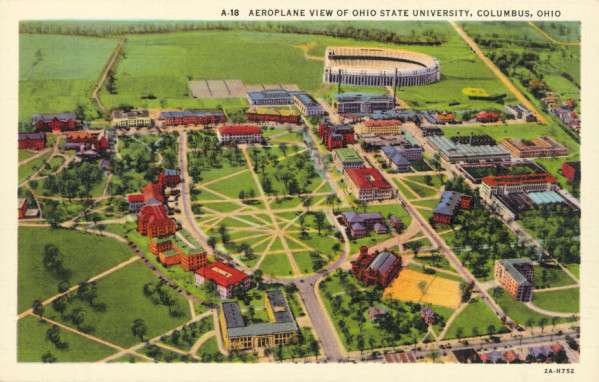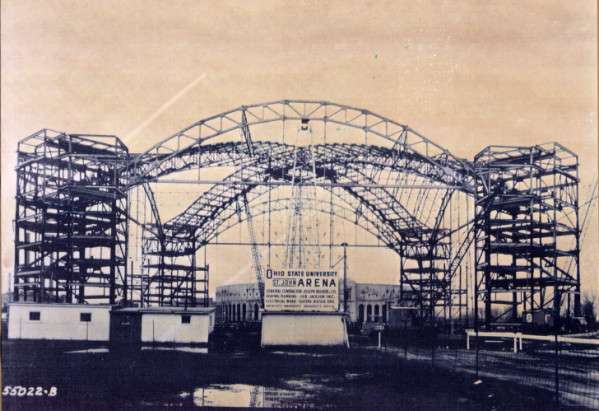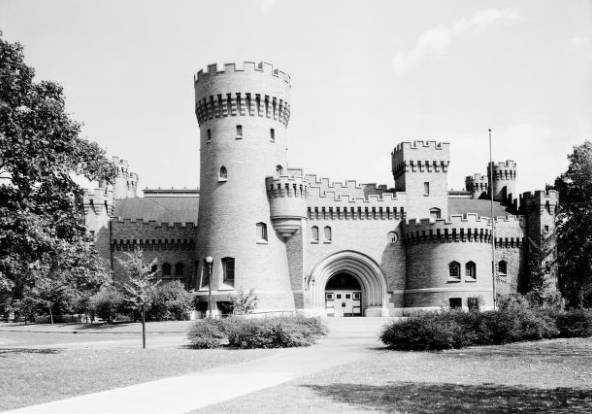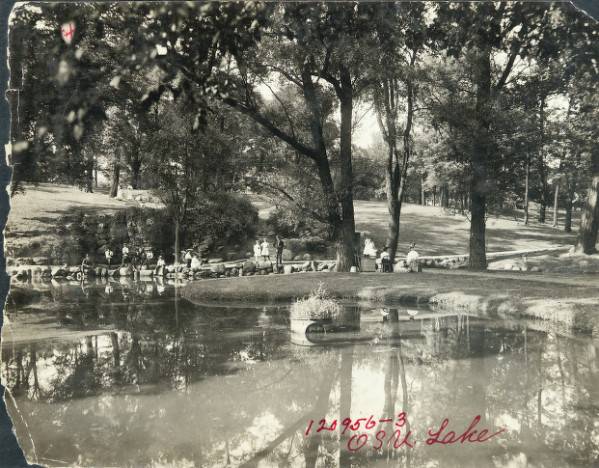Columbus Bicentennial: OSU Edition

In the second installment of our Columbus bicentennial series, which looks at the capital city’s landmarks through the years, we’d like to focus on one of our most visible and notable institutions–the Ohio State University!
Founded in 1870 as the Ohio Agricultural and Mechanical College, the university is rapidly approaching its sesquicentennial in 2020. On that first day of class in September of 1870, only 24 students met. These days, it boasts over 55,000 undergraduate and graduate students and is recognized as one of the country’s largest and most comprehensive campuses. Plus, you may have also heard of their football team, the Buckeyes.
Because of the importance of the university to Columbus and to Ohio, Ohio Memory has a huge number of images and items related to the school’s history. We have everything from a photo of an 1888 co-educational chemistry course to the very first “Script Ohio,” performed in Ohio Stadium on October 10, 1936. This post looks at a few of the notable locales around campus, and how things have changed over the past century and a half.

St. John Arena is a recognizable sight nowadays, but the photograph above shows the campus structure (located between Woody Hayes Drive and Lane Avenue) under construction in 1956. Named for Lynn St. John, who served as the Ohio State men’s basketball coach and athletic director until 1947, it was built to hold a crowd of over 13,000 spectators. Through the steel frame you can see Ohio Stadium in the distance, but what you may not know is that the framework for both these important sites was done by the same company. In addition to the Horseshoe and the Arena, the Mt. Vernon Bridge Company also built the steel frames of the Neil House and Beggs Building in Columbus, as well as multiple bridges across the Ohio River, before going out of business in the 1960s.
The brick turret above may look familiar, but it’s no longer a part of the Armory Building on campus as it was in this photograph, ca. 1935. Located at 15th Avenue and North High Street, the Armory (which also went by the names “the Gymnasium and Armory,” “the Armory and Gymnasium,” “the Naval Armory,” “the Gymnasium,” “the Auditorium,” “the Military Department Building,” and “the Gymnasium, Armory and Drill Hall”) was razed in the 1950s after it suffered extensive damage in a 1948 fire. The site is now the location of the Wexner Center for the Visual Arts, which opened in 1989. In designing the Wexner Center, architect Peter Eisenman took a post-modern approach and included a deconstructed replica of the turret to reference the former building. Eisenman’s uniquely off-kilter design style can also be seen in his work on the Columbus Convention Center.
This photograph of Mirror Lake, taken in the late 1890s, really shows how the iconic campus location got its name. It’s hard to imagine now, but the lake was originally spring-fed and served as a source of drinking water for the campus and surrounding area. But for the past two decades, Mirror Lake is often most associated with the annual tradition known as “Mirror Lake Night,” when thousands of OSU students swarm to the location at midnight on the Thursday before the Buckeye game against their rivals, the University of Michigan, and leap into the frigid water–quite a stark contrast to the idyllic Victorian scene above!
These images and more are available to browse on Ohio Memory. Exploring the site is a must for Columbus residents, Buckeye fans, OSU alumni, and Ohioans in general–take a look around and see what you can find!
Thanks to Lily Birkhimer, Digital Projects Coordinator at the Ohio History Connection, for this week’s post!





Leave a Reply
You must be logged in to post a comment.